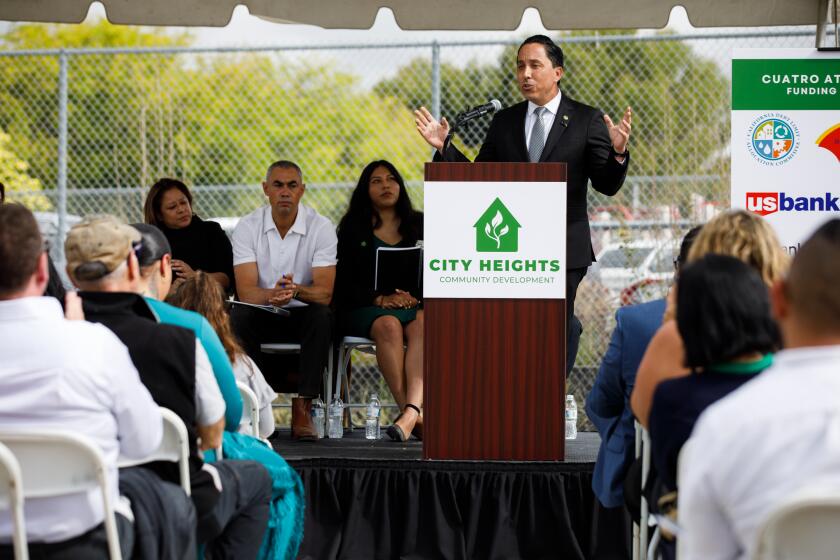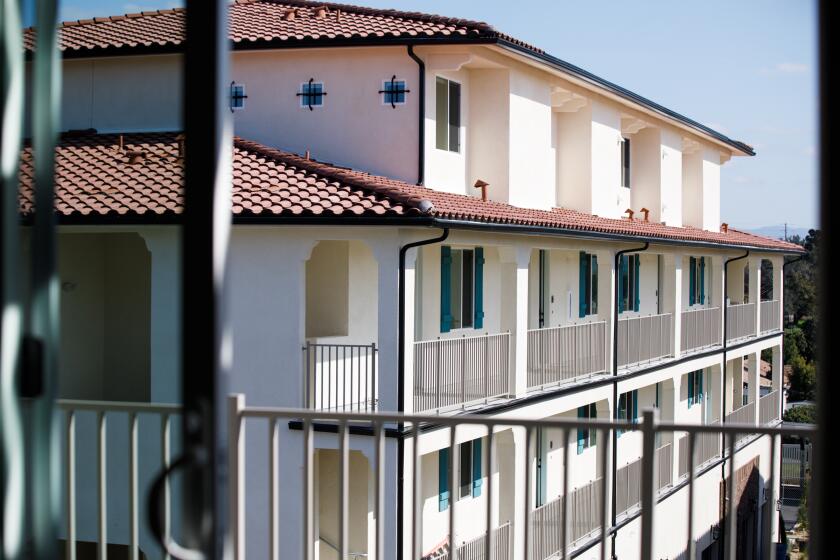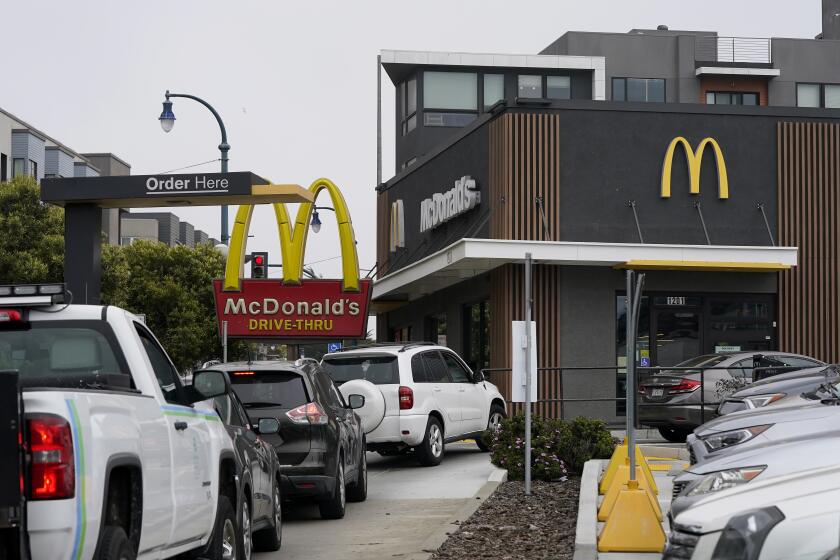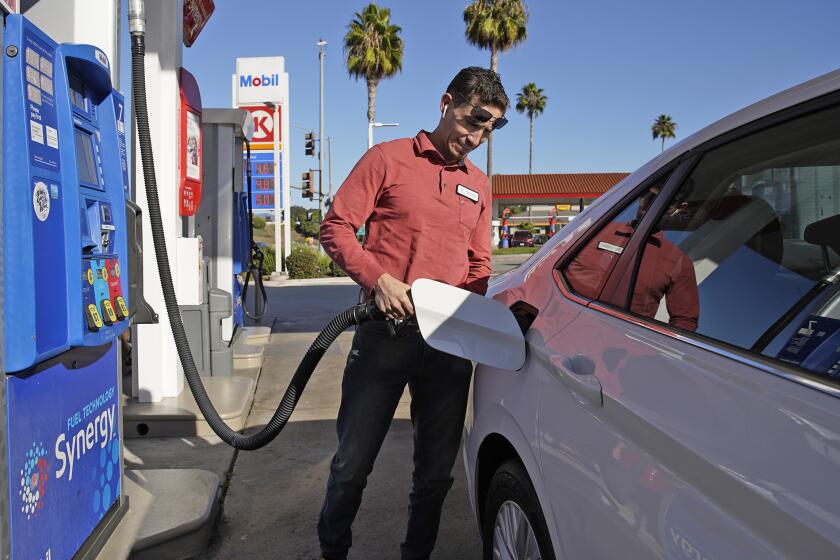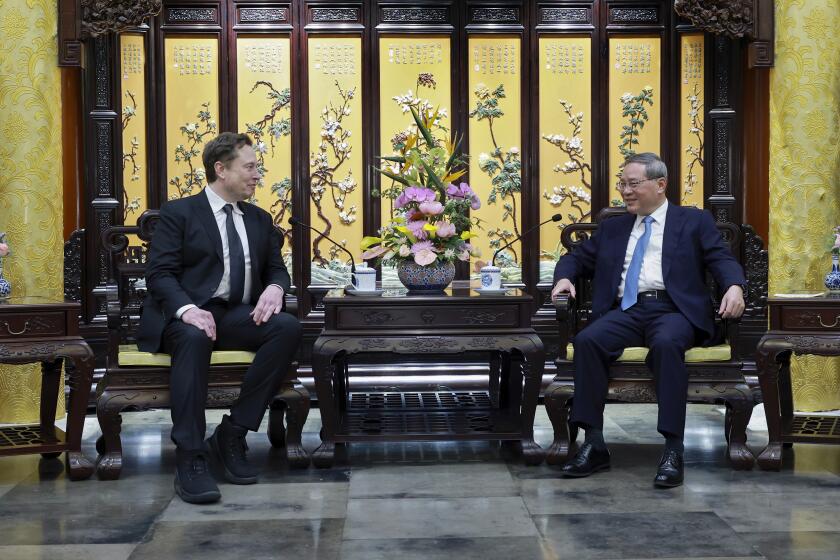Without much choice, Comic-Con goes back to its roots

Most big movie studios dropped out as strikes have ground Hollywood to a halt. Yet interest in San Diego Comic-Con persists
It’s hard to imagine now, but the nation’s most popular comic book convention — San Diego Comic-Con International — did not have its first sellout until 2007.
The pop culture phenomenon seems almost quaint nowadays when viewing a YouTube video of Marvel Studios in 2006 trying to sell itself to the crowd. Studio chief Kevin Feige was in a small room with a simple cardboard Iron Man poster as a prop. After that year, Marvel and many other major studios changed tactics and blasted onto the stage with polished, bombastic presentations that seemed to get bigger with every return visit.
This story is for subscribers
We offer subscribers exclusive access to our best journalism.
Thank you for your support.
The growth of Comic-Con into a Hollywood juggernaut happened rapidly, even Steven Spielberg had to show up in 2011, and it seemed like no new TV show or movie — no matter how little it had to do with comic book culture — dared miss the convention. To many, it felt like no expense was spared for two decades as the biggest actors graced panels and had over-the-top promotions.
But some of that glitz is gone this year.
This 54th annual Comic-Con will feel a bit more like the old days of comic conventions, though it was likely not what organizers had envisioned. A joint strike by actors and screenwriters in Hollywood means almost all major studios are skipping this year. Some had decided not to attend even before the actors union’s decision on Thursday. The result: There will be virtually no one to go on stage in front of the 6,500-person crowd in Hall H. There were a few studios, like Prime Video, that were still committed to big panels — but even they had canceled everything by Friday morning.
It almost feels like the mid-1990s again, with comic book creators taking up bigger rooms than they had last year, TV shows with cult followings getting ready to shine and a lot of promotions for things the general public might not have any idea about.
As of now, there will likely be no change in what the average San Diegan sees each year if they venture downtown: Advertisements wrapped around buildings, tons of free installations and more than 135,000 attendees. Hotels that have spoken with The San Diego Union-Tribune haven’t reported any cancellations and the convention is still sold out, with four-day adult passes going for $1,450 and up on resale site StubHub.
Longtime attendees and fans say nothing could stop them from going, and insist there is more to Comic-Con than just Hollywood studios. Ashley Eckstein, the voice actress of Ahsoka Tano in Star Wars animated projects since 2008, said she doesn’t think you can write Comic-Con off, even if Marvel, HBO, DC, Sony and others aren’t there. If anyone would know, it’s her. Eckstein has been a fixture at conventions since 2007, not just for Star Wars but for the female-focused pop culture clothing company — Her Universe — that she started.
“What people don’t see, unless you are there, is everyone is so happy and excited,” she said. “They are happy to be connecting in person and there’s an electricity and energy you can’t put into words, unless you are there and feel it.”
Eckstein will preside over a Her Universe fashion show Thursday night at the Harbor Ballroom of the Manchester Grand Hyatt for this year’s Comic-Con.
Comic-Con spokesman David Glanzer said Tuesday he didn’t think the studios skipping this year was a big deal and that was more of the result of outside events, like the strike.
“It’s not uncommon for Marvel, and other studios, to miss Comic-Con from time to time,” he said. “But we always look forward to their future return.”
In 2018, Marvel and HBO skipped Comic-Con and there was some speculation the convention might be on its last legs. But last year Marvel Studios had its biggest Hall H presentation in years and HBO built an entire castle in downtown San Diego to promote its new “Game of Thrones” show.
The optimistic tone of Comic-Con can’t hide the concern of tourism industry watchers over what a down year means for the biggest promotional event in San Diego. The city spends roughly $25 million a year to promote America’s Finest City. In recent non-COVID years, Comic-Con has attracted around 2,500 media members from 30 nations who are all in the city, writing about it and giving San Diego free exposure that doesn’t require the city to put up a dime.
Miro Copic, a marketing expert and professor at San Diego State University, said the city might be losing out on highly coveted earned, or free, media this year if there isn’t big news coming out of the convention. The earned media concept in the marketing world is when an entity, like the tourism authority, doesn’t pay for coverage and a newspaper journalist, Instagram influencer or YouTube channel comes to San Diego on their own and does a piece on how much fun they are having here.
“Earned is where the huge value is,” Copic said. “If you get a ton of radio, print, social media coverage, that value is immeasurable.”
While there are different opinions on how much money Comic-Con gets in earned media, he said his favorite study that illustrates the topic concerns college basketball. Butler University, an Indiana college that at one time most of the nation had never heard of, made it to the NCAA men’s basketball tournament in 2010 and 2011 and got nearly $1 billion in earned media, a university study said. It resulted in a 40 percent rise in admission applications, a bigger endowment, plenty of T-shirt sales and, basically, put the small university in the national spotlight and on the college basketball map.
The thinking with Comic-Con earned media is less about convincing someone to take a trip to San Diego. It’s more about a business seeing Comic-Con coverage and thinking it might be a good place to relocate or a big organization deciding that is where they should hold their next conference.
“The earned value for San Diego with Comic-Con is really important to keeping San Diego at the forefront and cutting edge of what cities are doing,” Copic said. “That we are not only a destination for tourism, but these big events.”
At this point, it’s unclear if media coverage will be diminished, but does The Hollywood Reporter really need to send a huge team of reporters if the biggest news is Marvel Comics announcing its new titles?
Hollywood industry experts told the Union-Tribune that studios hedged their bets this year, unwilling to commit resources to a Hall H presentation that could cost thousands of dollars if there were no stars on stage. There are headwinds working against the convention with studios and franchises doing their own events, such as Star Wars Celebration and Disney’s D23 Expo, but experts all said the decision largely rested on the strikes.
The Business of Comic-Con
Comic-Con International might be a nonprofit, but there are millions of dollars wrapped up in its operation for surrounding businesses, as well as the organization itself. Any change in its operation is closely watched by more than just the entertainment press.
The nonprofit, which also runs Anaheim’s Wonder Con, brought in $26.7 million in program service revenue in 2109, said its tax filings. It gained just $4.7 million in 2021 and $980,000 in 2020 as the convention went online only for two years. It earned money through a smaller in-person event in 2021 and mainly sponsorship deals in 2020. Tax filings for last year’s convention were not yet available.
The organization received more than $2.5 million in Payment Protection Plan, or PPP, federal loans during the pandemic. Both loans were forgiven. The San Diego Convention Center Corp., which counts Comic-Con as its main event but has numerous others, got a $2 million PPP loan forgiven.
Glanzer said studios, or any panel presenters for that matter, don’t pay for programming time or space. So, it’s not like Comic-Con is directly losing money by Marvel Studios or Netflix taking over Hall H.
The economic impact of the convention on the region is arguably a bigger deal for the city than the actual organization that runs it. San Diego State University estimates the impact of the convention is more than $165 million in overall spending with more than $90 million in direct attendee spending. That takes into account hotel stays, restaurants and numerous businesses that surround it. For instance, it’s pretty rare to see the Broken Yolk Cafe on Sixth Avenue busy, but it regularly has a line out the door during the convention.
There are also nonlocal organizations that rake in the cash. New York-based KAP Media Group is the main company that does all the building wraps downtown and will have its biggest year yet with 23, up from 18 last year. This week, wraps could be seen covering the Hard Rock Cafe (Paramount+’s “Yellowjackets), Omni Hotel (Fox Animation), Hilton Gaslamp (AMC’s “Interview With the Vampire”) and nearly a dozen other buildings with advertisements for Prime Video and Netflix shows.
Founder Lori Brabant said wraps can cost more than $100,000, but did not want disclose specifics. She said changes in studio attendance didn’t seem to affect her business, and was confident this was a one-off year. Brabant started in 2012 with one wrap, but she said Hollywood’s interest has generally grown each year.
KAP partner Kelly Reynolds said they were jokingly calling this year “Comic-Con Lite,” even if it didn’t really affect their business. She said last year, the first year in-person after two years, felt a little slower than she would have hoped. Yet Reynolds said she is confident that next year, after strikes are potentially worked out, Comic-Con will come roaring back.
“We think in 2024 it will be finally when all the stars, literally, will align here and we’ll see Comic-Con come back in full force to the way it was pre-pandemic,” she said.
Comic-Con is contracted to stay in San Diego through 2024, but any trouble with the event typically scares up some concerns it is going to Anaheim or Los Angeles for a bigger venue.
“I certainly hope” we stay, Glanzer said. “If we can again negotiate reasonable hotel rates and other crucial services, then we would love to be here for another 50 years.”
Eckstein, who will go to 22 conventions this year as part of fan signings and with Her Universe commitments, said she would be heartbroken if Comic-Con ever left San Diego.
She has a special connection to the city, with her husband being former San Diego Padres second baseman David Eckstein. The couple lived in Coronado while he played for the team in 2009 and 2010 and she got to see the biggest years of the convention’s growth. In particular, she said she loves how the event spills over into the rest of the community at hotels, the Gaslamp Quarter and Balboa Park.
“Comic-Con and San Diego are one (and) the same,” Eckstein said. “The two are synonymous. It just wouldn’t feel right to have Comic-Con not be in San Diego. I hope San Diego will always be its home.”
Get U-T Business in your inbox on Mondays
Get ready for your week with the week’s top business stories from San Diego and California, in your inbox Monday mornings.
You may occasionally receive promotional content from the San Diego Union-Tribune.

